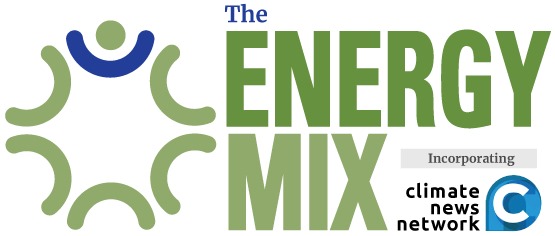As well as designing and building net-positive new buildings, they have shown us that even older buildings can be renovated so they become part of a sustainable future. And as well as proving good for the climate, it is also proving to be good for the business bottom line, say the partners in the Powerhouse collaboration.
“Energy-positive buildings are the buildings of the future. The mantra of the design industry should not be ‘form follows function’ but ‘form follows environment’,” said Kjetil Traedal Thorsen, the award-winning Norwegian architect who is a leader in energy-positive design. “This means the design thinking of today should focus on environmental considerations and reducing our footprint first, and have the design follow this premise,” he told DeZeen magazine in 2019.
Powerhouse Kjørbo, near Oslo, showed that ordinary office buildings built in the 1980s can be totally renovated to become energy positive by optimizing and combining known technology in new ways. The award-winning building, thought to be the world’s first net positive office building, shows that even in cold climates, such renovations make commercial and environmental sense.
Powerhouse represents a collaboration in developing climate buildings, and consists of the entrepreneur and project developer Skanska, the environmental organization ZERO, and Snøhetta architecture and design office. The Research Centre on Zero Emission Buildings (ZEB) and Enova also were important partners in the project.
Powerhouse says it wants to be the most climate-ambitious player in the construction sector. In the autumn of 2019, the collaboration launched a new standard for future-proof buildings, called Powerhouse Paris Proof. Based on the Paris Agreement’s 1.5°C objective, it sets a cap for total greenhouse gas emissions for a building throughout its lifespan. Another underlying requirement is that the building must be constructed as an energy-positive building.
Powerhouse Kjørbo achieved the highest possible BREEAM environmental standard from the Norwegian Green Building Council, and won a UN Global Climate Action award in 2023. “No one has previously renovated an existing office building to this environmental standard,” said Klaus-Anders Nysteen, then CEO of Entra Eiendom, in a 2014 video.
A heat pump, photovoltaic system, and geothermal wells in the park outside the buildings provide heating for radiators, water, and ventilation air, and cooling in the summer. Sensors control the need for light, ventilation, and heat/cooling.
“Through multidisciplinary collaboration, we found solutions that are simple and logical, and by that, creating a building that produces more energy than it actually consumes,” said Thorsen, who co-founded Snøhetta in 1989.
In 2019, Snøhetta pledged to make all its buildings carbon negative within 20 years. That means all their buildings will generate enough energy to compensate for carbon emitted during the production of building materials, construction, operation, and decommissioning. “It’s all on the market and it’s not even particularly expensive,” said Thorsen. “So it’s absolutely possible to get fully CO2 negative buildings.”
The Powerhouse collaboration developed the Smart by Powerhouse guide in 2018 to explain different levels of smart buildings and provide input in the design phase.
Powerhouse Brattørkaia in Trondheim, completed in 2019, is the country’s biggest new energy-positive building. It produces double the amount of electricity it consumes daily, thanks to 3,000-square-metre solar panels wrapped around the building which provide green energy for itself, neighbouring buildings, and city transport.
The latest, Powerhouse Telemark, will reduce its yearly net energy consumption by 70% compared to similar new-construction offices, and will produce more energy than it consumes over its entire lifespan.
The same sustainability strategies applied to residential buildings have produced a pilot project called the ZEB Pilot House. As well as generating its own energy, it delivers enough to power an electric car year-round. The building, a collaboration between Snøhetta, Scandinavia’s largest independent research body SINTEF, Zero Emission Building partner Brødrene Dahl, and Optimera, is primarily intended as a demonstration platform to facilitate learning.
Powerhouses set an example for how the building industry can collaborate for a more sustainable approach, raising the quality of research and expanding the knowledge-base on innovations in the industry.




